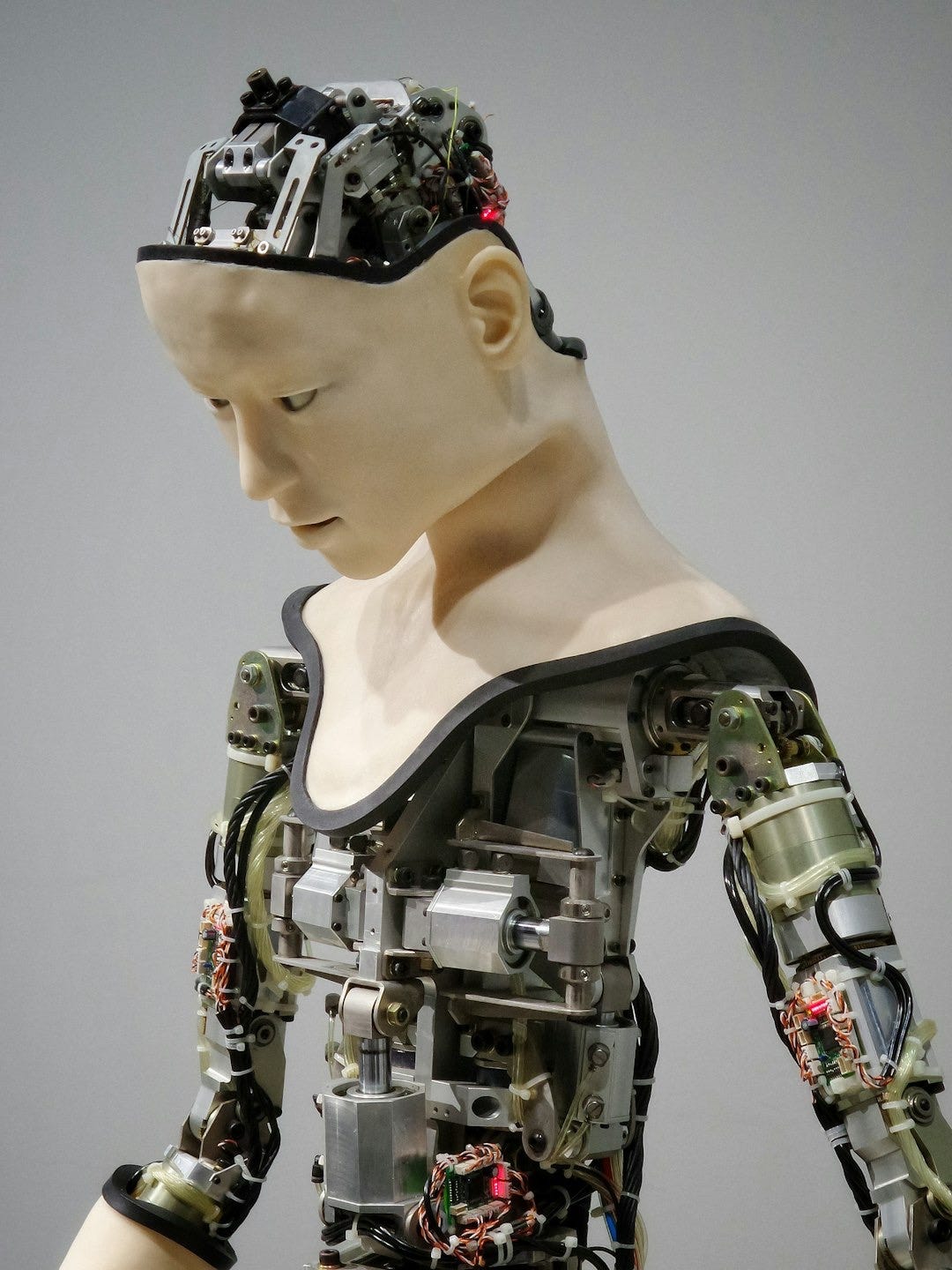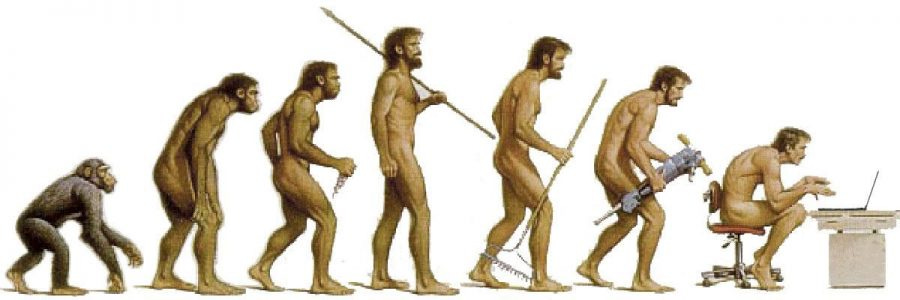How to stay real in a time of AI
Perhaps it's time to stop hyper-optimising our messaging and start to humanise them instead. Not out of some high-flying idealism, but out of necessity given how the media landscape is devolving.
After writing about the importance of having a core story and the process of story harvesting, this post is about the importance of story expression, particularly in a time of AI.
I think we need to start thinking about marketing, media and communication in an entirely different light, given how fast internet and media are being polluted with dehumanised, low-value AI-slop. People’s aversion to non-human intelligences has led to the ‘clankers’ slur for them, an interesting new word.
A clash of expectations on AI
Two years ago, back in 2023, I published a paper about what AI might mean for the creative industries. Sometime later, former Dutch minister of justice Fred Teeven gave me a friendly sneer right after my talk at a conference of Dutch film production companies about the projected effects of AI on film production companies.
Teeven disagreed with my argument that one day, photo or video evidence would become irrelevant as proof in courtrooms.

Content authenticity, two years later
Recently I was reminded of my interaction with Teeven when I spoke to the head of communications of the World Press Photo, who shared that he knows of ways in which it is close to impossible to detect AI generated images.
I felt a bit sad to conclude that my prediction had already come true, just two years after the conference. I hope all courtroom judges are aware of this.
Short term utopia vs. long term dystopia

My two key points at the conference were:
In the short term, an AI utopia would emerge for film producers, mainly because of more rapid concept prototyping and general cost cutting on creative working hours.
For the longer term, I warned of a looming AI-dystopia for all involved, because those who had been replaced with AI would gain access to the same increasingly powerful tools, thereby rapidly weakening the competitive position of production companies.
I also foreshadowed that someday, one person would be prompting the next cinematic blockbuster from their mom's basement, which made some conference attendees laugh. Today, this technology already exists, although luckily it isn't yet that good.
Taking a much broader look, I believe that when it comes to online/media content, we can expect more short-term AI-utopias (for some) and longer-term AI-dystopias (for all), likely leading to a deeper fragmentation of experiences, further deepening the loss of collective stories and the loss of meaning.
Are we increasingly desperately trying to reach each other through faster, shorter, louder and more efficient communications than the others?

In March of 2024, LinkedIn also introduced short form videos and what I’ve noticed is how formulaic many if not most of these videos on LinkedIn are, using a similar structure and very particular ‘keep them engaged’ kind of narrating that is so unnaturally excited, fast and ‘pointed’.
The stereotypical post is structured like this:
Hook: usually a provocative question, shocking statistic, or relatable problem that grabs attention in the first few seconds. Like "Want to know why 87% of content creators are doing it wrong?"
Setup: establishes credibility and frames the problem. "I've spent 10 years helping creators grow their audiences..."
Promise: what the viewer will learn or gain. "In this guide, I'll show you the exact formula..."
Story/Personal Experience: builds connection through narrative. "When I first started creating content..."
Main Content: usually in one of these formats:
Step-by-step process ("First, you need to...")
Listicles ("The 5 key elements are...")
Problem-solution pairs ("If you're struggling with X, here's how to Y...")
Before/after comparisons
Recap: quick summary of main points
Call-to-Action: usually asking viewers to like/subscribe/follow, join a program, or try the suggested methods. Often includes urgency ("Don't wait! Start implementing these strategies today!")
I’m not saying it’s wrong to use these formulas because they obviously work or we wouldn’t be seeing them everywhere, I’m just wondering how effective they will be when they’re increasingly AI-generated. The scripts often already are, while the videos will be increasingly directly generated.
How useful is a generated post
narrated by a non-existent human?
Ironically, an exceptionally large number of these videos on LinkedIn seem to be about how to effectively reach more people using video, by using just the right hook and the most relevant engagement tactics to lead the ‘target audience’ to the almighty ‘call-to-action’.
Making videos trying to reach people by explaining how to make videos to reach people seems a bit like an infinite doom loop.
The big promise is:
The more effectively engaging and interesting you can be in the shortest possible amount of time, the more likes and followers you will have and the more successful you shall be!
But I wonder:
How valuable is it really to capture the attention of people who have the time to scroll through infinite video feeds with broken attention spans? How loyal could they be as clients?
As we are ever fiercely competing with other humans for snippets of attention, what happens when at some point we are competing with engagement-focused AI’s that excel at pattern recognition and emulation of formulaic content? Do we want to be in this ‘race to the bottom of the brainstem’?
At some point — what’s the point?
How is it leading to happiness?
Are marketing and advertising on the decline?
What I’m projecting is a general deflation of all marketing endeavours.
So to recap:
If nearly everybody is an online broadcaster and we increasingly follow similar formulas for communication effectiveness to ever-more ridiculous extremes, at some point, each one of us, alone behind our screens, is performing psychological tricks on others alone behind their screens, desperately trying to press each other’s neuro-buttons in increasingly novel ways to squeeze out just a little more ‘engagement’, the ethereal gold of the 2020’s.
Meanwhile, AI’s will at some point outperform humans for sure when it comes to figuring out just the right engagement patterns, because current generative models are basically patterns-recognition machines.
What about getting together in the real world instead?
What would Debord think?
French philosopher Guy Debord might’ve something to say about all this.
How can we best reconnect?
So suppose you have a business, project or initiative that stands for a certain value that you want the world to know about. Are you going to throw it in the giant pool of the attention economy, by paying big tech for a little spot in the global engagement arena? Are you really going to join the race for attention against everyone else? Or are you going to take the slow, human approach?
Because U.S. tech giants have become unhinged with their social media networks and AI’s and a general trend of ‘enshittification’ has already been going on for some time, my hunch is that more and more people will consciously choose to move away from what is digital, fake, manipulative and hollow to more actively (re)connect with what is real, what is wholesome, resonant and authentically human.
I know the above is a big statement and I make no assumptions about how significant this overall trend is or will be, yet I think it’s already happening. Also I acknowledge that simultaneously quite a few people are only moving deeper into ever more optimised engagement ‘content’.
I would advise for you to choose humanness.
Do we need ‘humanification’?
Recently I attended a meetup where somebody made a pledge for ‘humanification’ and the word struck me as both entirely ridiculous and on point at the same time. In the use of the word seems to already be an acknowledgement of the fact that our lives have been ‘dehumanised’ to some degree and there’s a pledge in it towards countering the trend.
So what can we best do?
I believe that investing in the following can give us a head start in the future. I think these policies are just common sense antidotes against increasing online weirdness.
Communicate from the inside out with a strong core story, rather than accommodating and conforming to what you think the world should hear. This means being more authentically ‘as you are’, also if this goes against prevalent marketing and communication ‘wisdom’.
When you create media, focus on meaningful, human stories and dialogues that offer a sense of belonging and clarity rather than fast engagement. Don’t shoot some quick facts at people, but share something truly interesting and useful for those able and willing to stick around for longer than a minute.
Post less, with more attention to depth and detail because one deep, unforgettable story is worth more than a hundred forgettable, shallow ones. Perhaps the almighty algorithms don’t like that and so be it: meaningful connection with a few is far more valuable than shallow connection with many. Not all your ‘friends’ on Facebook are your actual friends.
Embrace radical transparency by showing the real, unpolished side of your business, project or person. Let people see your process, struggles, and values in action. AI-generated content can be polished, but it often lacks soul.
Create more shared offline experiences where people can actively participate rather than passively consume. This could be events, workshops, or simply ‘hanging out’ with no specific goals or intentions other than to enjoy one another’s humanness together.
Yes — I think it’s going to be more and more essential to focus on ‘humanification’, not just in marketing and communication, but in general.
Take an effort to meet your friends and family in person, be offline even more, stop pretending to be what you’re not online in hopes of getting what you want and just be real, just be you, as an individual, a group, an organisation and more.
Ok, one more bold over-arching statement!
I think that those who increasingly refuse to comply to social media pressures and stop pretending to be something they are not, are going to be the ones to win the future. Are you going to be a part of that?
Psssht…
So last but not least: if you made it all the way to the end of this long read, you’re one of my special readers and I write this mainly for you. Given that you are here, please click here and I’ll invite you to my Special Club ;-)



![Guy Debord – original photograph [1968] | Situationniste Blog Guy Debord – original photograph [1968] | Situationniste Blog](https://substackcdn.com/image/fetch/$s_!zL98!,w_1456,c_limit,f_auto,q_auto:good,fl_progressive:steep/https%3A%2F%2Fsubstack-post-media.s3.amazonaws.com%2Fpublic%2Fimages%2Fba13b79e-ad17-4d81-b8dd-9a7615022974_1951x1021.jpeg)

